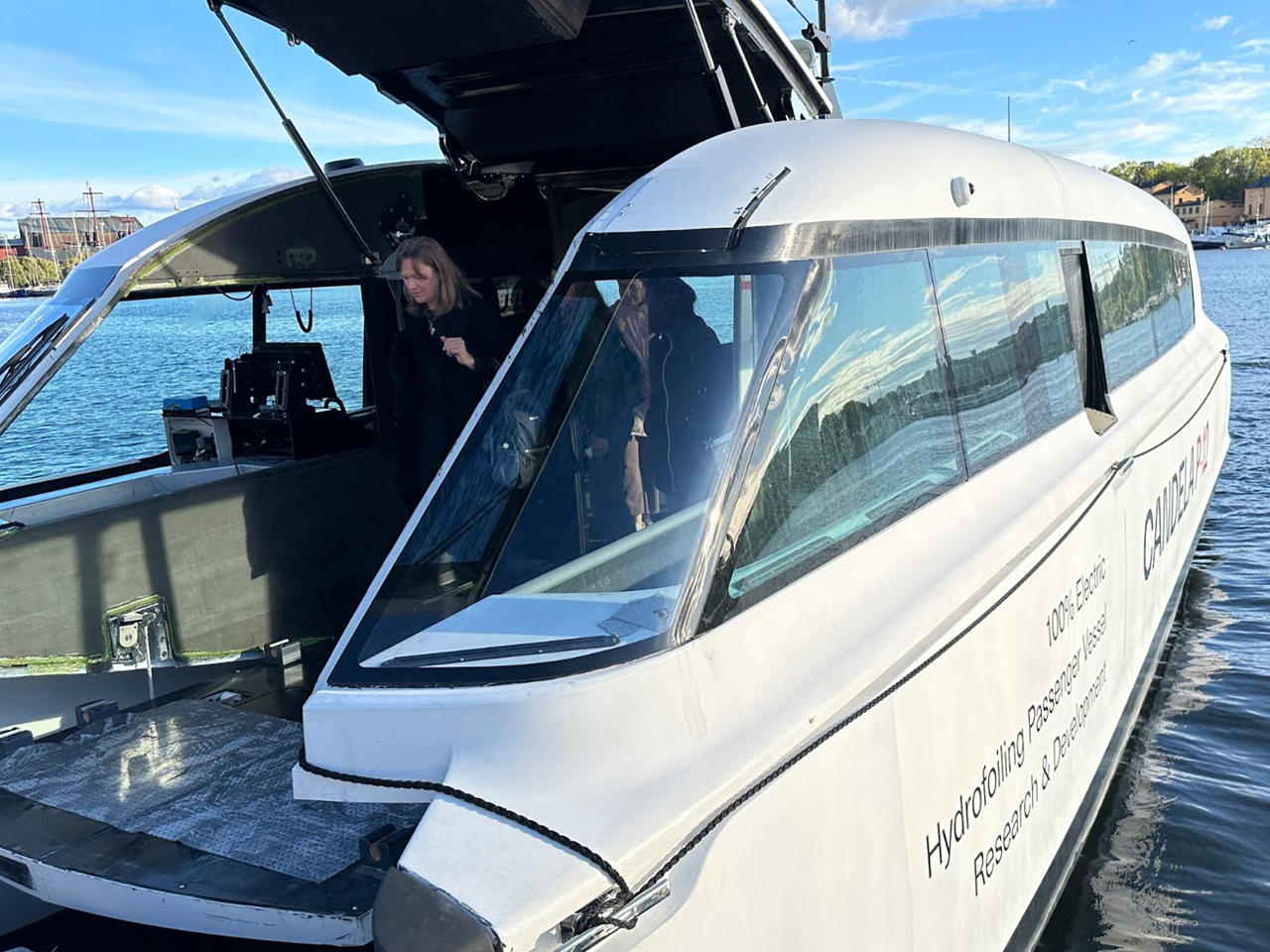If you read the Capital Gazette, you’re already following the details of our Swedish Study Tour. You know that it’s funded by two foundations, that it includes public officials from the state, county, and city, and that the former Annapolis Mayor and a far-right local activist think we’re wasting our time.
Despite the fact that the newspaper is now owned by a man who takes pride in using his media empire to sow distrust in local and national governments, we allowed a Capital reporter to join the trip and cover our activities. So far her stories have been accurate, fair, and interesting. If you’re not a subscriber you can follow on X @nataliemjones.
I write this from a train to Gothenburg Thursday morning, after three days in Stockholm.
We experienced the thrill of rush hour on bikes in a two-million person metropolitan area with very few cars being driven in it. Public transit is the primary transportation mode via bus, train, and ferry. Bicycling is next, walking after that, and cars are last.
Energy production is 40% hydro, 29% nuclear, 21% wind, 8% CHP facilities from waste incineration, and 2% solar.
We toured Royal Seaport, a community built on a former polluted industrial site where everyone lives within a five minute walk, bike, or transit trip from groceries and schools, where household garbage is sucked through pipes to a central processing center, and electric cars are parked outside apartment buildings for public use with the swipe of a card.
We heard from city officials, developers, architects, and an economist about how stakeholders collaborate to achieve national and local sustainability goals.
We saw the national and local pride in leading the world on environmental and social justice.
Did I mention that they don’t have landfills in Sweden? They use their trash to create heat and electricity. We learned that on day one.
Oh, and we asked about child care, an issue we’re struggling to address in our county and state. That’s called kindergarten in Sweden. It starts in the child’s first year and takes them to age five when school starts. The centers are in every neighborhood, and they joke that the cost is lower than leaving your dog at a kennel.
We felt like we were visiting the future.
Some of what we saw will inspire us to do small things, to take incremental steps like reducing parking requirements at apartment buildings when other options are available, or to invest in electric ferries like the futuristic hydrofoil version that we visited at the Candela factory.

But we can’t help but scratch our heads and wonder how Sweden and much of Europe - the countries my Dad worked with on the post World War II Marshall Plan for recovery - left us so far behind in addressing fundamental human needs like healthcare, transportation, housing, education, and sustainability.
I’ve heard Americans say that the Scandinavian countries have the benefit of being homogenous, of not having to deal with diversity, especially when discussing their high educational outcomes. I’m pretty confident that if you put a bunch of Swedish kids in a school with our buildings, our class sizes, and our curriculum they’d perform no better than American students. But I digress.
That got me thinking about race, politics, and public investment.
Our country thrived in the four decades after World War II. We invested in ourselves, grew a middle class, and income disparities shrank. Democratic and Republican administrations supported housing subsidies, transportation infrastructure, and schools. But that slowed to a crawl around 1980. That’s where race comes in.
Wealthy Americans and corporations grew weary of paying the taxes that supported those public investments. Free-market economists put their heads together with the political consultants who had created the race-based Southern Strategy to build a coalition that would support a retreat from the public investments and progressive taxation that funded progress. Both political parties bought in to varying degrees.
So I don’t blame our country’s problems on the fact that we’re diverse. I blame it on the wedges that politicians drive between our people.
That’s why I’m optimistic about the future. As we become more diverse over time, we also become more able to see and feel our common interests. Race-based politics are sputtering loudly as younger voters step up and push back against the wedges. When the cloud of racism clears, the path to a sustainable and humane future will be visible and attainable, especially for the public servants who take the time to visit places around the world like Sweden.

